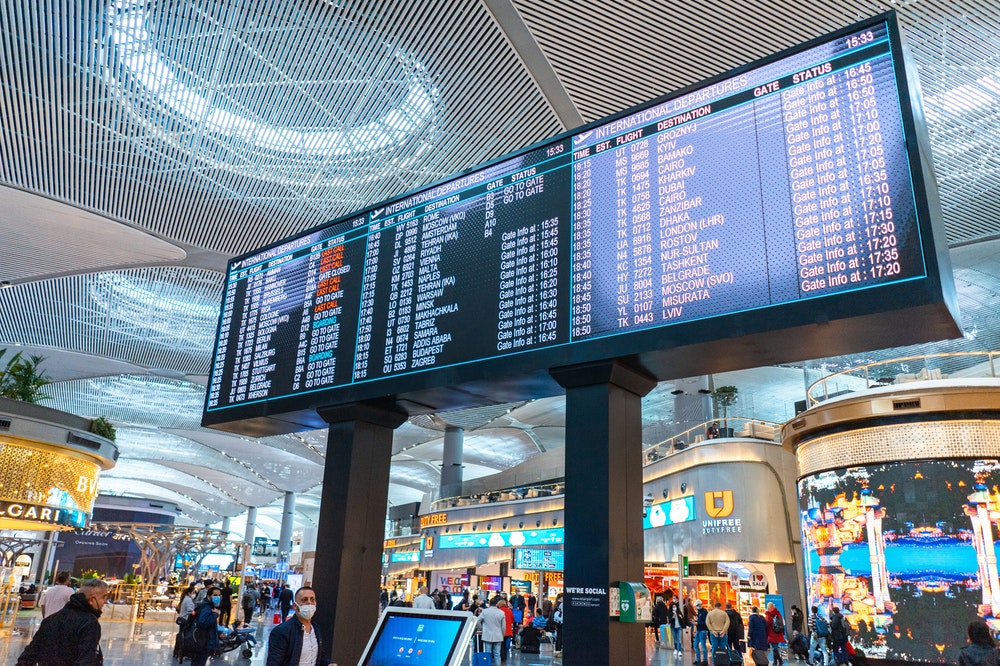What is a self-transfer flight?
What are your rights on self-transfer flights?
A self-transfer flight is a type of flight itinerary in which the passenger must manage their own connections between multiple flight legs, commonly with different airlines. Unlike the usual connecting flights booked under one ticket, self-transfer flights require travellers to manage the transfer processes by themselves.
In this blog post, we’ll explain everything you need to know about self-transfer flights. You’ll discover how to recognise them, what are the self-transfer flight advantages and disadvantages, and tips to make your journey safer and more efficient.
Check your compensation online.
What Is a Self-Transfer Flight?
A self-transfer flight is a flight where you, the traveller, are in charge of making the connecting flight.
For example, think about booking a flight from New York to London with Airline A and then a separate flight from London to Paris with Airline B. These two flights are not part of one booking, so it’s your job to pick up your luggage and check in for the next flight.
Having a self-transfer flight comes with extra responsibility but can give you more control over your travel plans and may save you money.
How Do You Know If Your Flight Is a Self-Transfer?
Here are some ways to recognize a self-transfer flight:
You Made Multiple Bookings
This is the clearest indicator that you have a self-transfer flight.
If you booked multiple flights separately, you are dealing with a self-transfer.
Different Booking Numbers
If you have separate booking numbers or itineraries for each part of your trip, you likely have a self-transfer flight. This means various airlines will manage each leg of your journey.
Perhaps, you booked a flight through Kiwi or Skyscanner.
It appeared as a single reservation.
However, if you have two or more booking numbers and each only shows details for a single flight when managed online through the airline’s website, these are considered separate flights — indicating a self-transfer.
Flight booking websites usually inform you of this before you confirm a booking.
Different Airlines
If your journey involves multiple airlines, there is a chance you have a self-transfer flight.
Particularly, if you booked the flight through a third-party flight booking site rather than directly from an airline.
Try to check the flight details on the websites of the individual airlines. If you can’t find both flights listed together on any of the airline’s websites, then it’s a self-transfer. In this scenario, each airline’s website will only show the details for the flights operated by them individually.
When unsure, reach out to the company where you bought the flight ticket.
Different Airports
It’s 99% certain that you have a self-transfer.
Regular connecting flights rarely require transferring between different airports.
Check your compensation online.

Is Self-Transfer Safe, and How To Make it Safer?
Although self-transfer flights can be safe, they come with their own set of risks.
Here is how to reduce those risks.
Allow Extra Time
Giving yourself more time between flights can help prevent problems if there are delays.
Try to have at least three or four hours between your flights to deal with unexpected issues like long lines at customs.
Extra time is even more important if you are travelling with checked baggage.
Research Airports
Familiarize yourself with the airports where you’ll be making transfers.
Understanding the layout, distance between terminals, and available services can help you save important time and lower stress during your layover.
Or, just be ready to move quickly when you land – and head directly to the next flight.
Purchase Travel Insurance
Travel insurance can provide peace of mind.
If you miss a connection because of unexpected delays, your insurance might help cover the costs of rebooking flights, accommodation, or other expenses.
Advantages and Disadvantages of Self-Transfer Flights
Self-transfer flights have both advantages and disadvantages.
Here’s what you need to consider:
Advantages
- Money savings. Often, buying separate flights can be cheaper than getting a single connecting flight. Sometimes, the savings are quite large.
- Freedom. Self-transfer flights offer more freedom in picking flight times, airlines, and even cities for layovers. This can allow for quick city tours during long layovers and more options in travel spots.
- More choices. You’re not stuck with one airline’s schedule or routes. This can be especially helpful for getting to smaller or remote destinations.
Disadvantages
- Additional responsibility. You have to manage your travel connections yourself. If you miss a connection, it can lead to extra costs and added stress.
- No airline assistance. With self-transfer flights, you usually won’t get any assistance if you miss a flight due to delays or cancellations.
- Baggage handling. You will need to collect and recheck your luggage, which can be very time-consuming.

What Happens if You Miss Your Self-Transfer Flight?
Here’s an easy-to-follow guide:
1. Rebook Flights
Go to the airline’s customer service desk that you missed.
They might help you get on the next available flight.
But usually, you’ll have to buy a new ticket.
Last-minute flight tickets can be very expensive.
2. Find a Place to Stay
If you can’t book a new flight that leaves on the same day, look for a place to stay the night.
There are many hotels close to airports that offer special rates for travellers who are stuck. Remember, the airlines won’t assist you with this.
3. Remain Calm
Stay calm and weigh your options.
Stress can make things more difficult, so take a deep breath and move forward in an organized manner.
4. Know Your Rights
Remember that even though your connection isn’t secure, you still have entitlements as a passenger for each flight on its own. If your flight is delayed or cancelled, you often have the right to flight compensation.
If you have to wait a long time at the airport, you have a right to care.
Be aware of your rights and respond appropriately (get in touch with the airline if they aren’t reaching out to you). Refer to the guides linked below for more information on your rights.
Read more:
